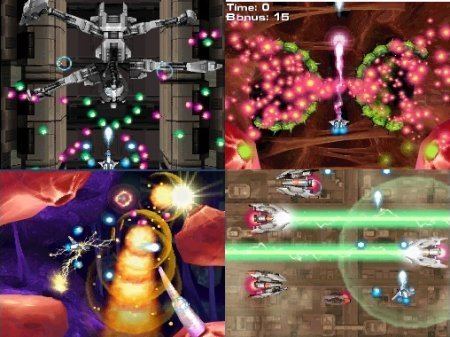8.4 /10 1 Votes8.4
4.8/5 Emuparadise Distributor(s) EU: Codemasters Initial release date 11 March 2008 Publisher Majesco | 8.1/10 IGN 75% Metacritic Genre(s) Scrolling shooter | |||||||||||||||||||||||||||||||||
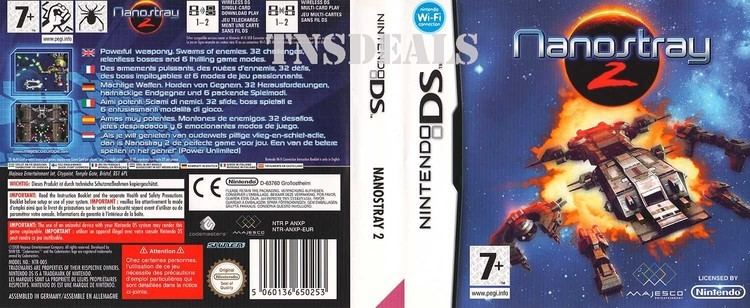 | ||||||||||||||||||||||||||||||||||
Modes Single-player video game, Multiplayer video game Similar Shin'en Multimedia games, Shoot 'em up games | ||||||||||||||||||||||||||||||||||
Nintendo ds longplay 043 nanostray 2
Nanostray 2 is a scrolling shooter video game for the Nintendo DS, and is the sequel to the original Nanostray. It was released in North America on March 11, 2008, October 9, 2008 in Europe and September 12, 2008 in Australia.
Contents

Story
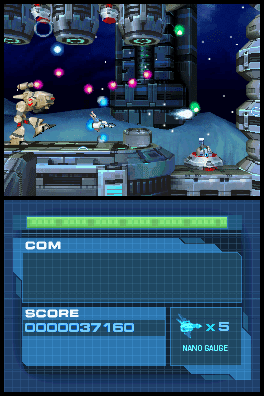
Taking place in the future, the supply ship E.S.S. Ariga is returning from its latest voyage when the awakening crew is alerted by a three-year-old distress call. The colonized area the Ariga is returning to has been contaminated by a techno-virus known as Nanostray. According to the distress call, the Nanostray virus had infected the colonist technology from computers to war-machines and made each one hostile. A flight commander has been assigned to win back the infested areas and, with the help of Officer Diane Stewart aboard the Ariga, discover and destroy the source of the Nanostray virus.
Gameplay
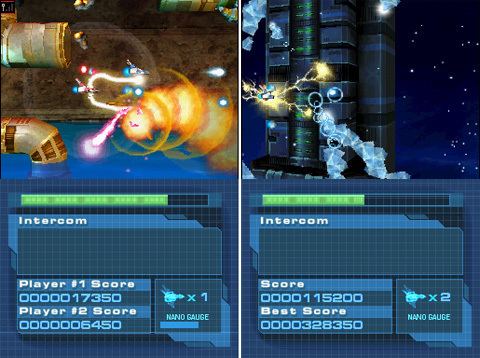
Addressing the complaints many had with tacked-on touchscreen features, Nanostray 2 boasts three control schemes—classic control, left-handed touch control, and right-handed touch control, classic being the default scheme. The classic scheme employs the A and B buttons for primary and secondary weapons, the D pad for movement, and the shoulder buttons (L and R) to change satellite drone placement. The touch control scheme employs the stylus/touch screen for movement, the D pad or face buttons for use of the primary weapon, and the shoulder buttons for use of the secondary weapon. Like the previous game, gameplay focuses more on graphic quality rather than touch-screen control. Customization is now a key part of the experience: at the start of a level, players have the ability to adjust which special weapons they'll take into the fight, alter the angle of their side-mounted guns as they get mounted on the front, sides and rear of the ship, and even the ship's sensitivity to D pad commands. Besides the main single-player mode, Nanostray 2 also has a Challenge mode, where players can try to get a set number of points, collect a set number of coins, or survive for a specific time limit.
Modes

Weapons
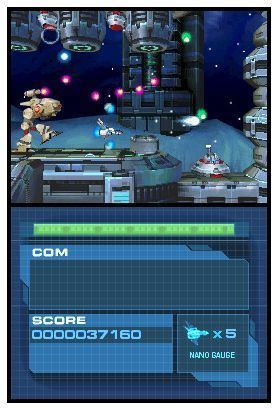
Players are limited to selecting which of six subweapons they would prefer. The primary weapon remains constant throughout gameplay, being a repeating laser bolt which can be augmented by satellites. Subweapons have different abilities, acting as lasers, mines, or remotely detonated devices. Each subweapon has a different power requirement, which draws from a limited supply on the player's ship. The power supply is replenished by collecting blue energy coins throughout a level.
Reception
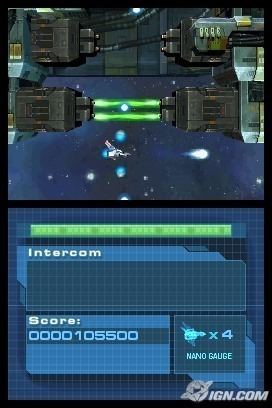
Nanostray 2 has received generally positive reviews from critics, with some reviewers praising features such as the 3D graphics and solid gameplay, and others criticizing the still-awkward-though-completely-optional touch-screen controls and unusual positions of save points between levels. GameSpot praised it as "a dyed-in-the-wool shoot-'em-up that offers great action in a shiny, proficient package", while lamenting its "D pad controls [as] too sluggish" and its "Disappointing single-card play". IGN praised Nanostray 2's graphics as "impressive...even the title screen" while lamenting its "enemy and vehicle design [as] uninspired.
